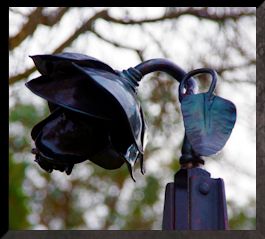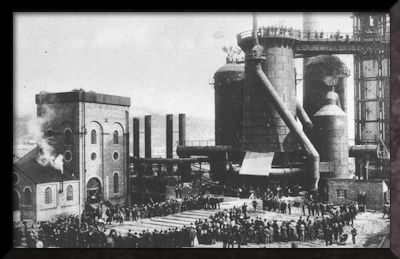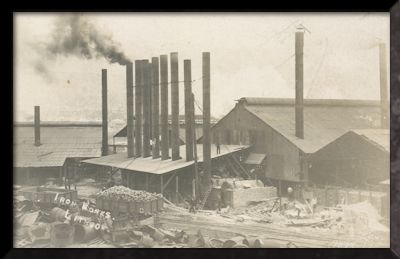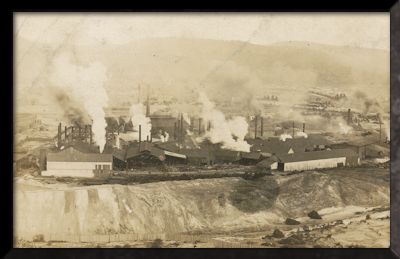|
|
|
|
||||||||
|
|
FIRST STEEL POUR IN AUSTRALIA AT ESKBANK, LITHGOW
On 24 April 1901 William Sandford organised a gala dinner to announce that he and his son Esk had successful tapped the first viable quantities of steel produced in Australia at the Eskbank Ironworks. Sandford had been working Eskbank since the 1880s, and although tapping steel was a triumph, he was nearly exhausted by it. He felt iron and steel were basic commodities and needed to be boosted, and he tried every which way possible to protect and support his venture. While Lithgow’s coal miners were free traders, iron workers and their bosses were protectionists so, to advance his cause, Sandford ran as a protectionist against Joseph Cook in the 1901 federal parliamentary election. He then tried to convince the NSW government to take over the works. Finally, when a tender for steel and iron supply became available he bribed three parliamentarians, including William Holman, to win the contract. Part of that deal included the construction of a blast furnace, to enable production of pig iron for steel. Sandford complied.
The Blast Furnace was ‘blown in’ on 13 May 1907. It was Sandford’s proudest moment and won him the title of father of the Australian steel industry. His relations with workers were relatively harmonious and beneficent and the Eskbank estate was, to him, a satisfyingly noisy and smoky place. However, behind the scenes, Sandford was financially and mentally strained. He could not raise capital but was unwilling to cede his management to external investors such as John Lysaght Ltd, and although Charles Hoskins and his brother George looked at the plant, they pulled out when they saw the state of the books. The Commercial Banking Company of Sydney, which had underwritten the operation, foreclosed on the ironworks on 9 December 1907, although it kept the Blast Furnace running. With 700 out of work, the Premier invited the Hoskins brothers to take over the Lithgow iron and steelworks. Although the complicated deal ensured Sandford’s debts were paid and he received enough money to guarantee his financial security, he was devastated and felt deceived by Charles Hoskins. His parting with the Lithgow community was sad for him, his wife Caroline, and the workers and their community.
Although Sandford got the ball rolling, it was the Hoskins family who would define the steel industry in Lithgow. They were clearsighted about the technological problems of the steel and ironworks, and the labour issues, and had considerable business acumen, but Charles Hoskins was impatient and imperious and provoked industrial unrest as soon as he set foot in Lithgow in 1908. Hoskins was also a protectionist, and although his negotiations with government over tariffs were never entirely successful, he did manage to get the Eskbank enterprise onto a solid footing before the surge in production caused by World War I. The best way to understand the workings, technology and scale of the Blast Furnace is to visit the site, which is a key element of the Fire Furnace and Forge Heritage Trail.
SOURCES Bob McKillop, Furnace, Fire and Forge: Lithgow’s Iron and Steel Industry 1874-1932, 2006 |
|
||||||||
|
|
|
|




